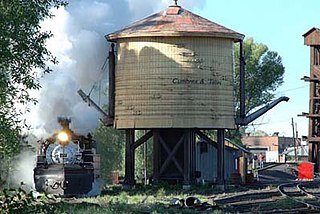Top Qs
Timeline
Chat
Perspective
3 ft gauge railroads in the United States
From Wikipedia, the free encyclopedia
Remove ads
This is a list of 3 ft (914 mm) narrow-gauge railways in the United States.














Narrow-gauge railroads of various sizes existed across the US, especially during the late 1800s, with the most popular gauge being 3 ft gauge.[1][2] Some of the more famous 3 ft gauge railroad networks in the US were based in California, Colorado, and Hawaii. These narrow-gauge lines were easier to build than standard gauge and cost significantly less to construct. Some of the lines of these former networks still exist in the present day and continue to use 3 ft gauge track, while the rest were either widened to standard gauge or abandoned (see table below).
Remove ads
Railroads
More information State/territory, Railway ...
| State/territory | Railway |
|---|---|
| Alabama |
|
| Alaska |
|
| Arizona |
|
| Arkansas |
|
| California |
|
| Colorado |
|
| Connecticut |
|
| Florida |
|
| Georgia |
|
| Hawaii |
|
| Idaho |
|
| Illinois |
|
| Indiana |
|
| Iowa |
|
| Kentucky |
|
| Louisiana |
|
| Maine |
|
| Maryland |
|
| Massachusetts |
|
| Michigan |
|
| Mississippi |
|
| Missouri |
|
| Montana |
|
| Nebraska |
|
| Nevada |
|
| New Jersey |
|
| New Mexico |
|
| New York |
|
| North Carolina |
|
| Ohio |
|
| Oklahoma |
|
| Oregon |
|
| Pennsylvania |
|
| South Carolina |
|
| South Dakota |
|
| Tennessee |
|
| Texas |
|
| Utah |
|
| Vermont |
|
| Virginia |
|
| Washington |
|
| West Virginia |
|
| Wisconsin |
|
| Wyoming |
|
Close
Remove ads
See also
- Narrow-gauge railroads in the United States
- Heritage railway
- 2 ft gauge railroads in the United States
- 2 ft 6 in gauge railroads in the United States
- 3 ft gauge railways in the United Kingdom
- Three foot six inch gauge railways in the United States
- Three foot gauge locomotives on the U.S. National Register of Historic Places
- Rio Grande 168 (operational)
- Rio Grande 169 (static display)
- Rio Grande 223 (stored)
- Rio Grande 278 (static display)
- Rio Grande 315 (operational)
- Rio Grande 463 (operational)
- ET&WNC No. 12 (operational)
- Eureka Locomotive (operational)
- Glenbrook Locomotive (operational)
Remove ads
References
Bibliography
Wikiwand - on
Seamless Wikipedia browsing. On steroids.
Remove ads
Remove ads
